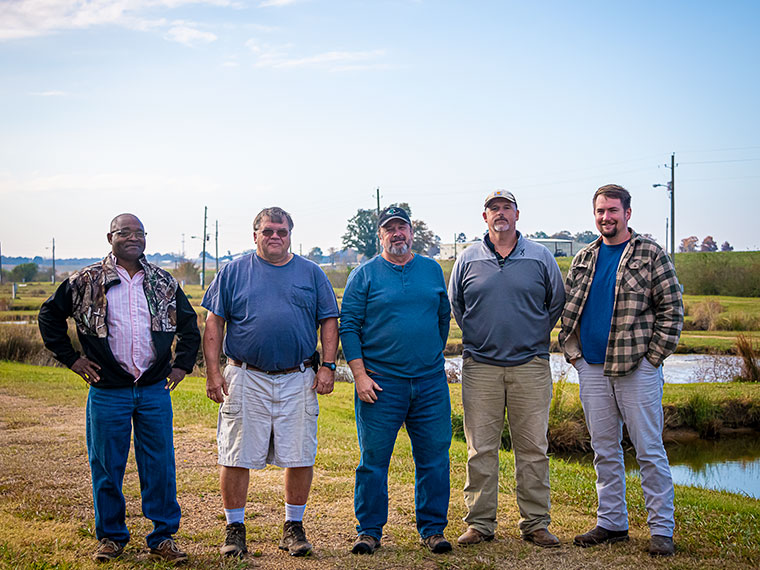The information presented on this page may be dated. It may refer to situations which have changed or people who are no longer affiliated with the university. It is archived as part of Mississippi State University's history.
The MAFES H. H. Leveck Animal Research Center, known as South Farm, includes 1,100 acres of grazing land and houses the Beef Unit, Poultry Unit, Equine Unit, Aquaculture Unit, and Facilities Unit. Caring for livestock is a daily job, 365 days a year. The dedicated personnel at these units care and feed for the animals, while also facilitating the research and teaching programs. The farm and its livestock provide an ample training ground for students in all majors, particularly those in the Department of Animal and Dairy Sciences, Department of Poultry Science, and the College of Veterinary Medicine.
The most veteran group at South Farm is the aquaculture unit. The team of four manages 86 ponds, 39 800-gallon tanks, four raceway tanks that contain over 1,200 gallons, two small raceway tanks, and 20 round tanks, with the sole purpose of ensuring aquaculture research remains afloat. Mack Fondren, facilities coordinator, has worked full-time with the aquaculture unit for 33 years, closer to 39 years if you add in his time as a student worker. He was one of the first student workers hired on the farm while he was pursuing his undergraduate in aquacultural management and his master's in ag extension education. Fondren leads the team through the daily routines of checking oxygen levels and feeding. Special projects are done after the daily chores including maintenance and repairs, as well as reconstructing ponds. Fondren's staff includes three full-time employees, all research technicians, and one student worker. Clarksdale native, Troy Lindsey has been with the unit for 27 years. He moved from Chicago where he worked for the USDA as a meat grader. Rodney Reed, a 22-year veteran, also began working at the facility as a student worker while obtaining his degree in fisheries. He turned the part-time gig into a career. Derrel Taylor grew up on a catfish farm and worked several jobs before joining the unit, where he has been for the last 18 years. Together, they keep the research going for scientists in MAFES, the Forest and Wildlife Research Center, the College of Veterinary Medicine, and USDA.

